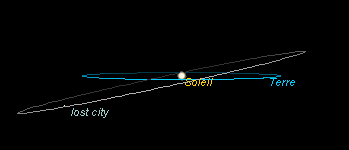
Spatial and Temporal Informations
Location of fall
Lost City (Oklahoma, U.S.A)
Coordinates
36°0'11" N, -95°5'42" E
Date of fall
January 3, 1970 20h 14mn LT
January 4, 1970 02h 14mn UT
January 4, 1970 02h 14mn UT
Initial velocity
14.1485 ± 0.0012 km/s
Start height of bolide
86 km
Terminal height of bolide
19 km
Fireball terminal velocity
3.4 km/s
Trajectory slope (// horizontal)
38 °










